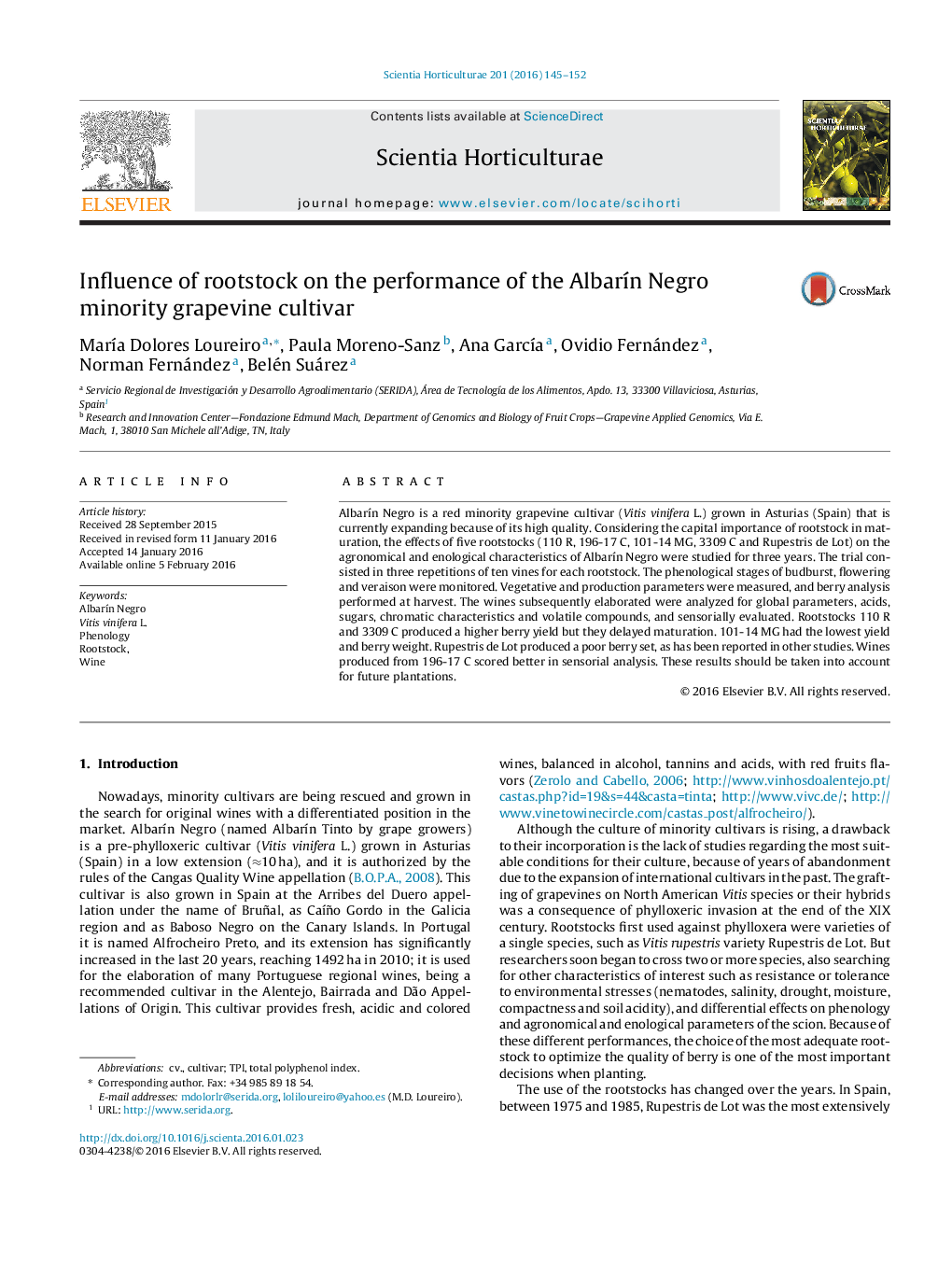| Article ID | Journal | Published Year | Pages | File Type |
|---|---|---|---|---|
| 6406369 | Scientia Horticulturae | 2016 | 8 Pages |
â¢AlbarÃn Negro behaved differently depending on the rootstock.â¢110 R retarded all the phenology and consequently the maturation.â¢101-14 MG and 3309 C have the same parents, but the second produced a higher yield.â¢196-17 C had the best performance, being its wines the best valuated.
AlbarÃn Negro is a red minority grapevine cultivar (Vitis vinifera L.) grown in Asturias (Spain) that is currently expanding because of its high quality. Considering the capital importance of rootstock in maturation, the effects of five rootstocks (110 R, 196-17 C, 101-14 MG, 3309 C and Rupestris de Lot) on the agronomical and enological characteristics of AlbarÃn Negro were studied for three years. The trial consisted in three repetitions of ten vines for each rootstock. The phenological stages of budburst, flowering and veraison were monitored. Vegetative and production parameters were measured, and berry analysis performed at harvest. The wines subsequently elaborated were analyzed for global parameters, acids, sugars, chromatic characteristics and volatile compounds, and sensorially evaluated. Rootstocks 110 R and 3309 C produced a higher berry yield but they delayed maturation. 101-14 MG had the lowest yield and berry weight. Rupestris de Lot produced a poor berry set, as has been reported in other studies. Wines produced from 196-17 C scored better in sensorial analysis. These results should be taken into account for future plantations.
Graphical abstractDownload full-size image
